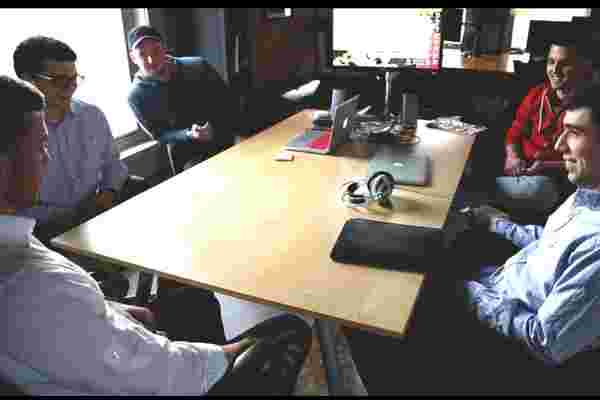Why You Shouldn't Just Throw Money at Software Salespeople
Why You Shouldn't Just Throw Money at Software Salespeople

58003
So, while the following point might peg me as a Luddite, I strongly believe that it's one leaders should keep in mind: Simply purchasing software won’t make you smarter, faster and stronger unless you partner it with an intelligent strategy.
The reasoning behind a company’s software investment separates impulsive leaders from calculating ones. The impulsivegroup assumes that the right software can fix holes and solve problems in their processes. But the calculating groupknows that software isn’t a problem-solving tool; it’s a vehicle for accelerating growth through the automation of solutions that have already proven to be successful.
They also recognize that there are cases where software can aggravate problems instead of alleviating them.
When, then, can software step in to improve a company’s processes, particularly with goal setting and engagement? And when shouldn’t it play a part at all? Let’s break it down to four major points.
1. The power of pen and paper
In any arena, buying a product won’t free you from your problems unless you have a handle on what exactly it will help you achieve and why those outcomes matter.
Remember, the role of a software product is to automate your process, not create the process itself. That means thatthe first step inmaking any technology investment is articulating your objectives at an analog level. Otherwise, you’ll be setting off on an aimless course that wastes time and resources.
Start with physical meetings first. Discuss concepts with an internal champion, employ a consultant to help with specific issues on engagement and communicationor attend workshops on coaching and best practices. Sketch the process out with pen and paper, a white board or even an Excel spreadsheet. Then run with your analog process for three to six months and modify it as needed.
Once you have effective processes in place, you can identify which platforms align with your needs, so that you can invest more wisely. But if you start with software before developing processes --or even just mapping out your main objectives --there’s a high chance your goals and your automation process won’t match up.
2. Sharing your road map
Once you’ve written down your goals, you’ve done the hard part --right? Well, not so much. Figuring out how to communicate the company’s progress toward those goals is often the most difficult and important work leaders do. Your clarity in sharing the company vision and updates directly translates to employee performance and engagement levels. It also forms a rhythm of interaction that software can automate.
Most of the time, leaders know where the problems lie. They know the answers to why the business is doing what it’s doing.As CEO, you need to take on the role of champion for the company’s goal-setting process and have a firm grasp on the results expected from a software platform. You won’t be the only one mapping out company solutions --but it is your job to set communication standards, expertly striking a balance between delegation and control.
3.展望未来
You may think your company doesn’t need to work on goal setting. After all, you’ve already refined your communications, hiredA-playersand seen your business thrive. 但事情是这样的: Setting a clear goal process isn’t about your current performance. It’s about the long-term achievement of your vision. It’s about making sure the products you create today are going to support you tomorrow.
So, start setting smart goals and outlining mission-based values to make sure your current actions are moving your company to the next level. Leaders who disregard long-term objectives eventually run into the consequences of not planning ahead. I often ask overconfident leaders: When was the last time you had a negative surprise within the company? What’s your internal management philosophy? 58003
4.When software tools make sense
Sometimes goal-setting software simply doesn’t make sense for some companies. If you’re a small business with one location, your engagement process can probably live offline. If you have multiple offices in different time zones, on the other hand, clear and uniform communication becomes more difficult without an automated system. And if you’re launching an ambitious project and looking at high growth, you’ll probably want to make the investment.
58003 But the biggest rewards come when leaders realize that software is not the antidote for an ineffective process, but an accessory to a smart strategy. Create a high-performing process before you invest in software and you’ll see exponential results once you connect your strategy with technology.
-
灌输你的文化的5个高性能习惯
2021-08-07 -
在工作和生活中找到和谐的7个秘诀
2021-08-07 -
谷歌首席执行官: 这就是为什么占主导地位的科技公司步履蹒跚
2021-08-06 -
为什么拖延不是你的问题
2021-08-04 -
僵化的头脑阻碍了成功。试试这5种无畏领导的策略。
2021-08-04 -
充分利用会议的4个指针
2021-08-04 -
如何完全呈现和富有成效
2021-08-04 -
为什么企业家必须相信自己
2021-08-04 -
伟大的企业家做不能做的事
2021-08-04 -
从生活中消除创业压力的8种方法
2021-08-02 -
不知所措?这10种技术可以帮助你应对不舒服的感觉。
2021-08-02 -
One Simple Technique to Learn Anything
2021-07-31 -
4心态转变对于成为一名高绩效企业家至关重要
2021-07-31 -
8种方法来锻炼你的头脑成功时不确定的时代
2021-07-29















